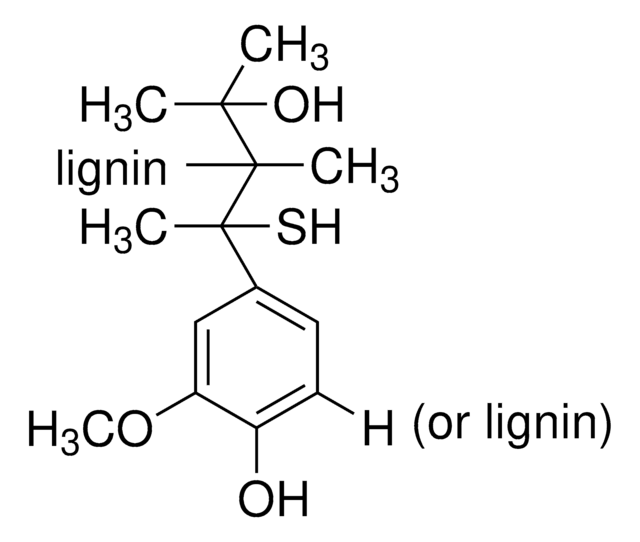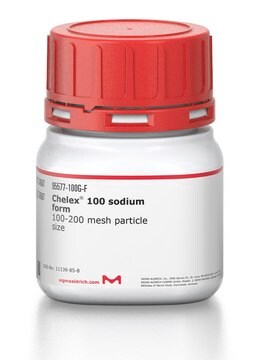414891
Cadmium
granular, 30-80 mesh, ≥99%
Sinonimo/i:
Cd
About This Item
Prodotti consigliati
Livello qualitativo
Saggio
≥99%
Stato
granular
Impiego in reazioni chimiche
core: cadmium
reagent type: catalyst
Resistività
7.27 μΩ-cm, 22°C
Dimensione particelle
30-80 mesh
P. ebollizione
765 °C (lit.)
Punto di fusione
320.9 °C (lit.)
Densità
8.65 g/mL at 25 °C (lit.)
Stringa SMILE
[Cd]
InChI
1S/Cd
BDOSMKKIYDKNTQ-UHFFFAOYSA-N
Cerchi prodotti simili? Visita Guida al confronto tra prodotti
Descrizione generale
- nickel-cadmium battery electrodes
- plastic, ceramic, and glass pigments
- polyvinyl chloride (PVC) stabilization against light and heat
- engineering coatings for steel and other nonferrous metals
- a component of several specialized alloys.
Applicazioni
Avvertenze
Danger
Indicazioni di pericolo
Consigli di prudenza
Classi di pericolo
Acute Tox. 2 Inhalation - Aquatic Acute 1 - Aquatic Chronic 1 - Carc. 1B - Muta. 2 - Repr. 2 - STOT RE 1
Codice della classe di stoccaggio
6.1B - Non-combustible acute toxic Cat. 1 and 2 / very toxic hazardous materials
Classe di pericolosità dell'acqua (WGK)
WGK 3
Punto d’infiammabilità (°F)
Not applicable
Punto d’infiammabilità (°C)
Not applicable
Dispositivi di protezione individuale
dust mask type N95 (US), Eyeshields, Faceshields, Gloves, type P2 (EN 143) respirator cartridges
Scegli una delle versioni più recenti:
Possiedi già questo prodotto?
I documenti relativi ai prodotti acquistati recentemente sono disponibili nell’Archivio dei documenti.
I clienti hanno visto anche
Il team dei nostri ricercatori vanta grande esperienza in tutte le aree della ricerca quali Life Science, scienza dei materiali, sintesi chimica, cromatografia, discipline analitiche, ecc..
Contatta l'Assistenza Tecnica.









